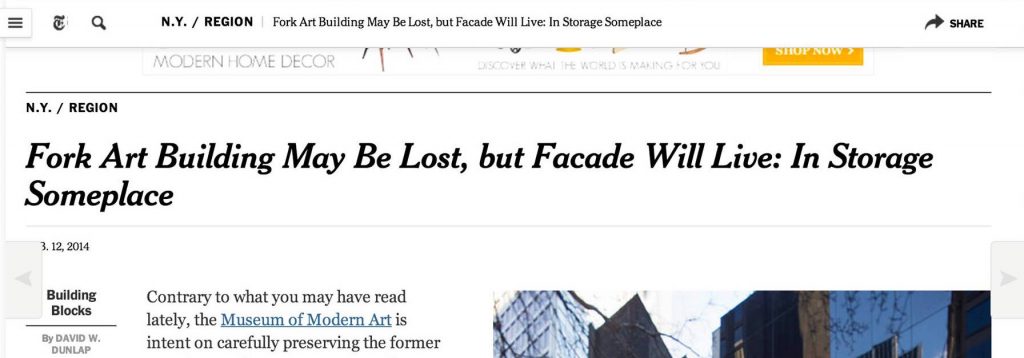When should you correct spelling in a title?
Note: This post relates to content in the eighth edition of the MLA Handbook. For up-to-date guidance, see the ninth edition of the MLA Handbook.
The spelling of a title should almost never be corrected, especially by students, even when the title seems to include an error. Sometimes the “error” is intended, as for the Stephen King novel and movie Pet Sematary, or may be otherwise purposefully made, however ill advised, as for the movie Two Weeks Notice.
But sometimes an incorrect spelling appears to be the result of a typo, as for the 2011 manual published with the title The Senate Office of Education and Traiing. (The manual included information about a proofreading course and was soon republished with the missing letter n added to the title.) Another example is a New York Times article about the American Folk Art Museum originally published online with “Fork Art” in the title. (The title was eventually corrected, albeit silently):

Reproducing the error, of course, risks having your reader believe that you made it and is also likely to be distractingly pedantic (no one needs to see a mistake like Traiing repeated throughout a text). But you also don’t want to distort the record, especially for print (which version did you consult?). (Since typographical errors in online works are often quickly corrected, you can usually update the entry once the publisher does without correction or comment if you subsequently fact-check the title.)
Whether you silently correct such titles (Training), correct them using brackets for the interpolation (Trai[n]ing), or use “[sic]” (Traiing [sic]), a note explaining that the error appears in the original or that the title has been emended is needed when you first refer to the work in your prose or cite it in parentheses or notes.